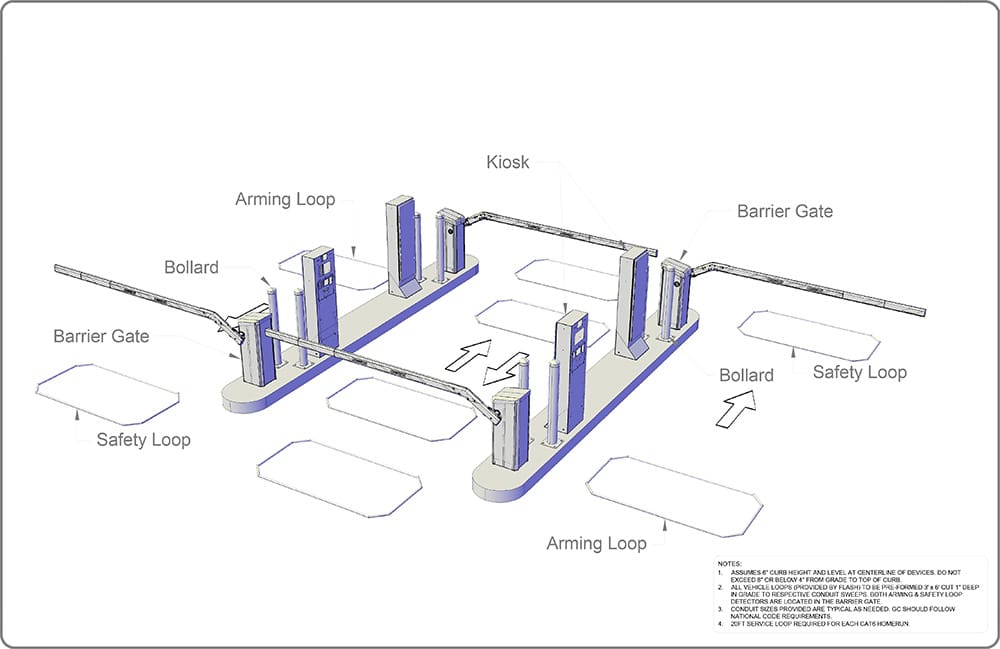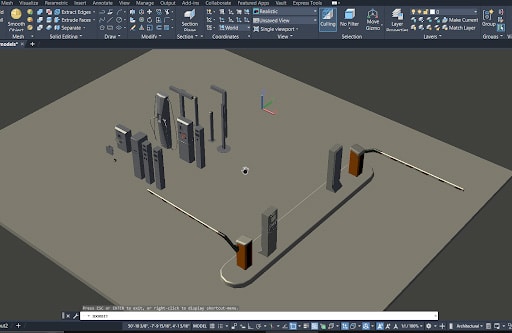
Innovation & Technology
The Future of Parking Technology in Smart Building Design
Achieving operational goals via the latest tech: living versions, digital twins & new modeling
As someone who has been navigating the new construction space through the lens of parking for almost five years now, I’ve seen firsthand how the relationship between these two industries is ripe for change.
In the past, projects have turned to technology as a final step. But today, technology is coming to the frontlines as a first thought and a key factor in designing and building at every step of the way. The rise of smart buildings has made technology not just an addition but a key piece of foundational infrastructure.
I’m always eager to take steps forward to get ahead of the evolving demands of this dynamic space. I start by listening to the operational goals of the owner and then exploring what technology options can deliver the experience. Here’s what I’ve learned:
The Way They Work
In the construction world, AutoCAD is an essential software tool for architects and general contractors to design, analyze, test, and revise structures before construction begins. Every decision that’s factored into the design process on AutoCAD can be planned out to work in harmony with the larger project.
The idea of a digital twin, a virtual representation of a real-world project, has gained much traction in recent years, especially in the smart city space, and it has become the standard for future-ready and smart building projects.
A big focus for new construction is seamlessly integrating technology platforms and sales cycles into the new building design and construction process. Rather than attempting to fit parking technology into a new building post-construction, our focus now is to assist in the planning process.
Leveraging Technology
As part of this initiative, specific Revit Families are created that can be inserted into Architectural and Engineering centralized Revit Models. In this 3D modeling tool, building components are identified by their function, and the model can include technical specifications and link directly to manufacturers’ support documentation. The specific space occupation and distance requirements for things like license plate recognition (LPR) are built into the Revit Family Type along with constraints and parameters for proper configuration and placement.

Revit is a commercial building information modeling (BIM) software generally used by architects, structural engineers, mechanical, electrical, and plumbing (MEP) engineers, designers, and contractors to create, edit, and review 3D models in exceptional detail. Revit Families are libraries of fully functional (BIM) templates & 3D models of various objects (doors, windows, stairs, etc.) that can be downloaded from external sources.
Revit blocks are like smart Lego pieces. Each time a program user clicks on your piece, it includes details about the product and its manufacturer. Once the piece is dropped in, it behaves like a design constraint, responding to surrounding items.
This type of technology is truly incredible, and taking advantage of it allows technology providers to move away from just being a vendor that supplies hardware. Instead, you get to be at the table with your customers during the planning process as they design the infrastructure that your technology will be operating in.
Collaboration with everyone involved in a new construction project is called building information modeling, or BIM. Learning this new language opens many doors for teams during the planning, design, and construction process. As more is discovered about the criteria, decision-making process, and strategy of your partners, you can better meet each new project’s unique needs.
Case Study: Application of Revit Files
We are currently executing a few installations with a large e-commerce vendor for their owned and leased assets. Corporate leadership wants to create consistency and efficiency in their parking operations across the board. With requirements like reusing building access fobs, closing overhead doors after hours, and security cameras over entry and exit lanes, this customer needs a robust solution that can be programmed and then dropped into new location building plans.
With the innovative Revit files, architects of new build locations can simply drop in a preferred set of parking and mobility technology that meets their criteria. The location can then work with the technology provider and their parking operator to get recommendations for where vehicles should go, nested areas, and any additional technology.
The Impact on the Future of Building
Revit technology indicates a larger shift in technology vendors and how the sales process is changing in the age of digital twins and smart buildings. As technology becomes more integrated into the physical infrastructure of a new construction project, it’s being factored in earlier as the building is being designed.
To be a forward-thinking technology provider, it’s imperative for vendors to get ahead of this shifting landscape. One way is by putting technology specs at the fingertips of architects and general contractors within the tools they’re already using. By meeting them where they already are—you can move hurdles traditionally associated with procuring the right technological solution.
Our work with these technology tools has opened the door for many new opportunities. We’ve gained a seat at the table during these critical first conversations and planning sessions—with the ability to communicate more details than ever before at that stage.
Gaining access to critical information earlier only expands the possibilities of what technology providers can accomplish for customers that are ready to look forward and tackle the future of smart buildings and intelligent, responsive parking programs. ◆
Jose Morales is Vice President of New Construction at FLASH, and a member of IPMI’s Planning, Design, & Construction Committee.
-
This author does not have any more posts.


From the Editor
The Power of Planning, Design & Construction

Rethinking Parking Facility Design
How Electric Cars are Changing the Architecture of Parking.








